


At its heart, making a quilt feels like the ultimate textile tribute, taking fabric and remaking it into a new, beautiful, durable and superbly practical item. Quilts last a really long time, they are not a fast fashion item, they are passed through generations and cherished and mended. But, in a world where overconsumption is increasingly seen as a driver of climate change, it’s hard to look at your generous stash of fabrics and not feel a twinge of something uncomfortable.

Earlier this year I wrote my regular column for The Quilter about the topic of Economy and Environmentalism in patchwork and quilting. This is an area that I have been really mulling over recently as the discussions about the changes we can all make to help the world have grown. How many quilts worth of fabric do you have on those shelves? Has the ultimate recycling craft been made into an industry that does environmental damage? How can we enjoy our hobby whilst still being true to the spirit of patchwork past?

As a quilt historian I know that the romanticised story of the patchwork quilt made from recycled cherished rags isn’t the whole truth. Quilts have always been made from new fabric, especially bought for the purpose. In fact the earliest quilts were almost all made in this way, high status, silken, meticulously and professionally hand quilted from imported fabrics for the highest in society and their burgeoning consumer lives.
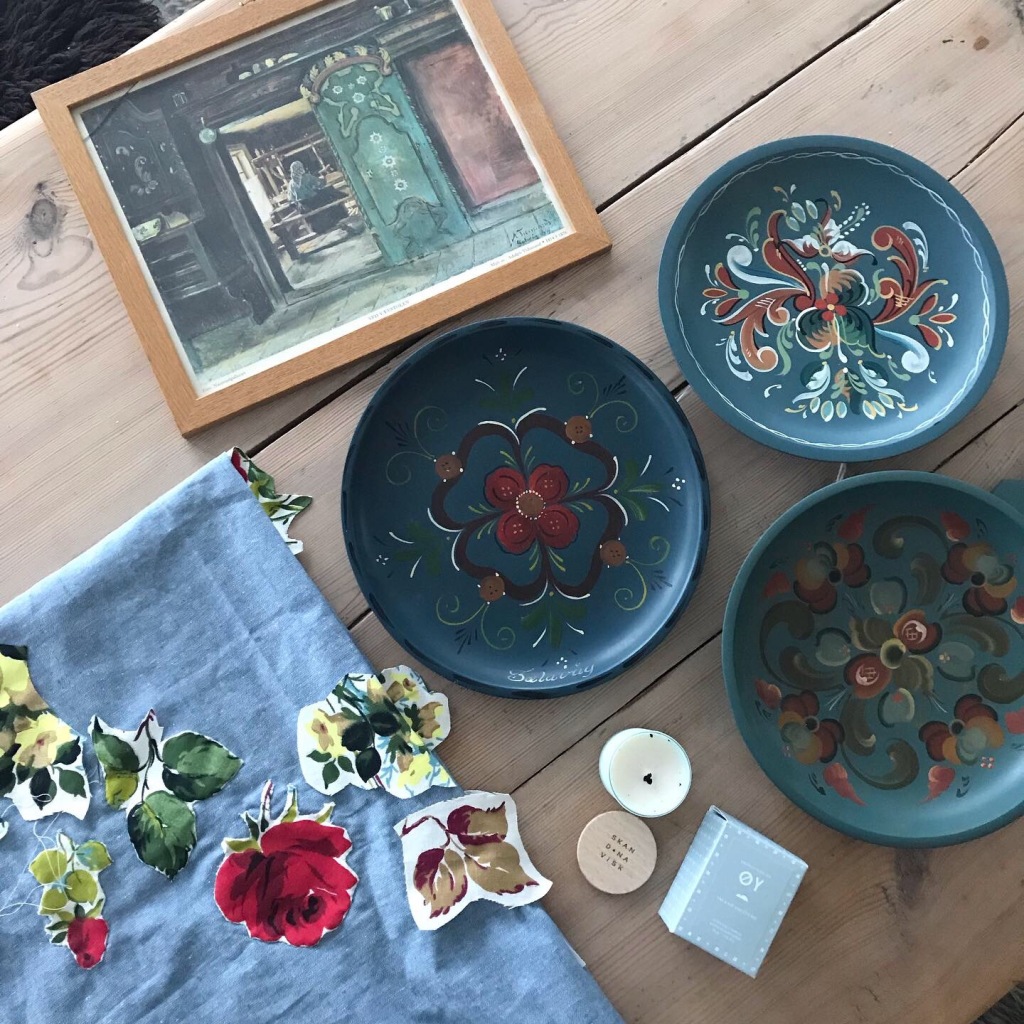
Of course alongside this world of high status textiles there was always a vibrant world of patchwork that was driven by thrift and recycling. Cloth was precious and makers were used to making-over garments, making do, patching and repairing, it was inevitable that fabrics final uses were often in patchwork quilts. Some of these fabrics would have undoubtedly gained special emotional status as they passed from a dress, made over to a child’s smock, perhaps ending up in a quilt. But patchworkers of the past took the same clear eyed approach to acquiring a wide array of fabrics as many of us do today. Patchwork pieces were widely available to buy in mixed scrap packs, they were traded and swapped with friends and family and were as much part of a patchwork ‘economy’ as we are today.

So how should we approach our own making today? These are huge, complicated and nuanced debates, it can be overwhelming to confront. Perhaps one way forward is just to think about it in terms of scale. In a project that I delivered for the Quilters Guild of the British Isles last year with the fashion brand Seasalt Clothing I became aware of just how much ‘deadstock’ fabric there is. In this project we helped Seasalt Customers learn the skills to turn fabric into quilts, part of their recycling remit for the business. If we all bought just a little less new fabric (decreasing the demand into the supply chain sustainably) and used up just a little more recycled fabric or previously unused yardage – it might not save the planet on its own, but every little helps?

My motivation is also selfish. I am a quilt historian and I really value the fabrics in quilts of the past that give clues about their makers and the time that they were made. I love quilts that use a huge array of fabrics, that use fabrics that are personal to the maker, that are eclectic or meaningful. I’m really not a ‘whole fabric line’ quilt maker.
As a mother I’m often called to account by my kids when it comes to day to day environmentalism. I decided that this year I would make a small change for good and start to gently change my fabric consumption habits. Firstly I would reduce the amount of new fabric I bought by using up more of my stash, and secondly I would try and incorporate more recycled fabrics into the quilts that I made. I started to pick up fabric on second hand action sites and charity shops as well as using up household textiles where I could. It would be a creative challenge as well as a consumer one, but if I’m honest I had some real misgivings. I sew for pleasure and for creative outlet, I enjoy fabric, would it take the very joy from making that I so enjoyed?
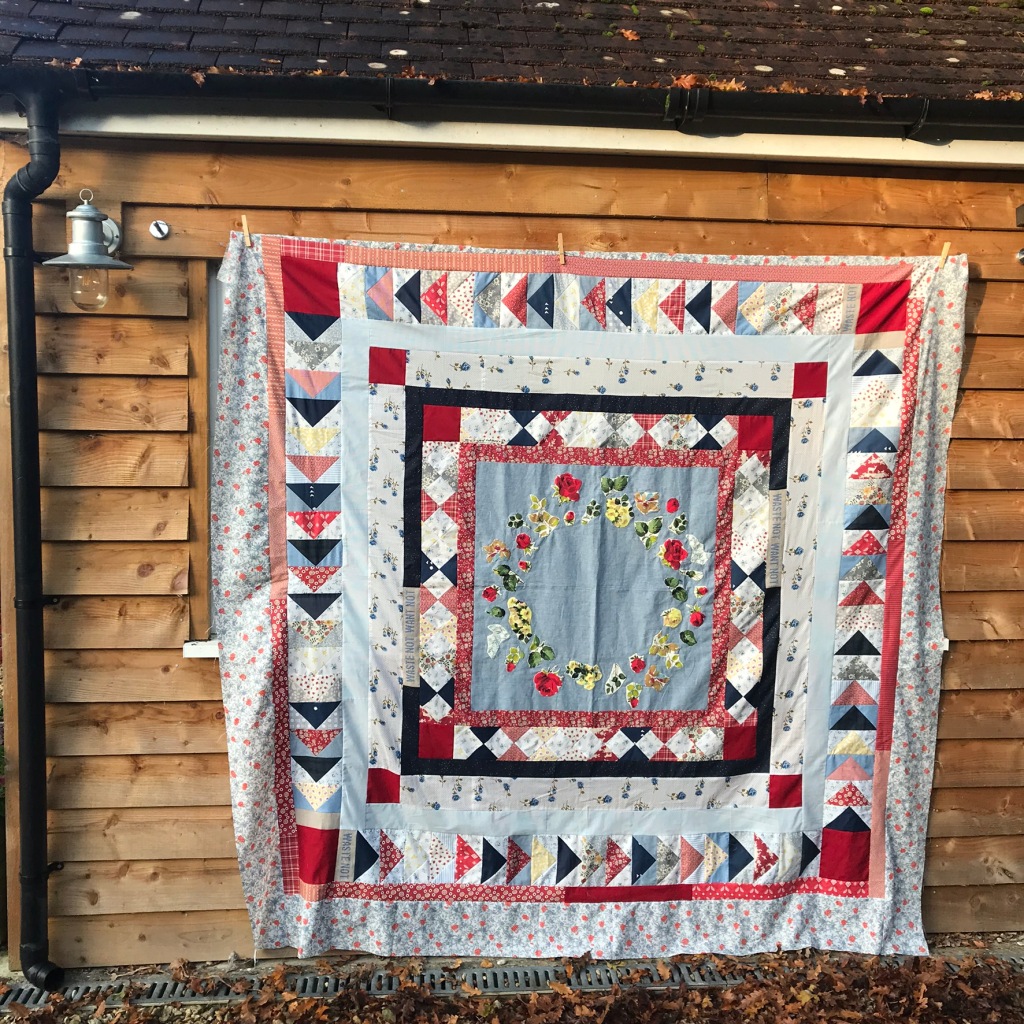

I knew that I wanted to make a Frame Quilt for this project. The Frame is a classic British stalwart of the 19th Century. These quilts were such a popular style for a few reasons that resonated with the ideals of my quilt. Firstly they are thrifty – they allow for using up scraps by their scrappy and varied layout of different frames radiating outwards. But instead of being completely about scraps they usually show off the ‘best’ fabric in the middle of the frame, allowing for a perfect balanced mix of thriftiness and indulgence. The centres of historical frame quilts include a range of ‘special’ fabrics. These include precious printed panels like Tree of Life and other chintz designs, but the centerpiece of choice for the thrifty stitcher was a technique called Broderie Perse. The really prized fabrics at the end of the 1700’s were chintz floral fabrics, super expensive and imported and highly decorative and Broderie Perse allowed the maker to take individual motifs and applique them to a larger background, to allow a small amount of precious fabric to go further and make a larger more impressive centre.
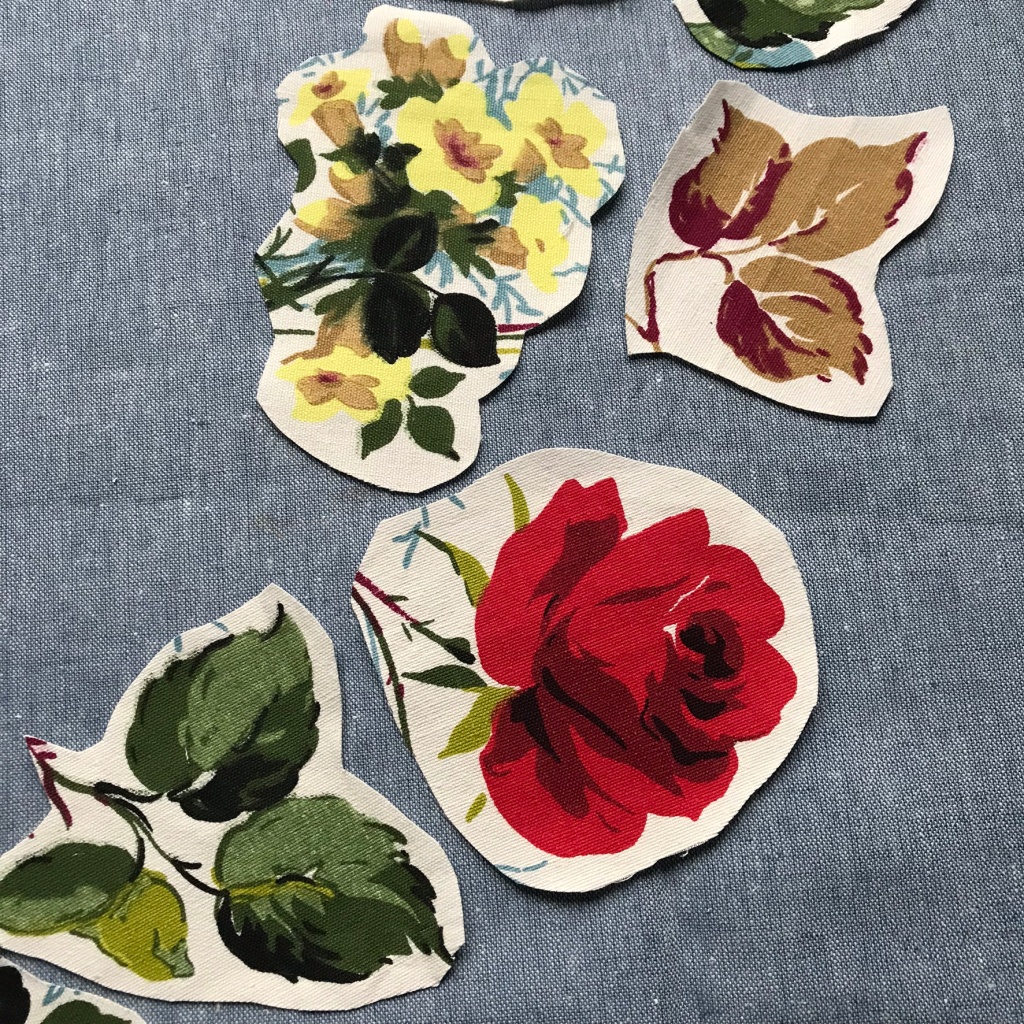
I had bought a small piece of 1950’s Barkcloth called ‘Tralee’ featuring beautiful roses at a second hand textiles fair and so I decided to show it off in a central panel, using a ‘wreath’ shape as my guide to build up the design. I loved the red and blue 1950’s aesthetic of this fabric and so I set to looking out for other vintage fabrics that would complement it. This process of fabric accumulation took longer than usual (although i’m always a long-muller of fabric choices, it usually takes me at least twice as long to put fabric together than to make a the quilt – most of my makes are in a ‘pondering-queue’ of at least a year before the first cut occurs). I really enjoyed the hunt for fabrics. Where as you might usually be able to click on an online shop and put together a fabric pull in an evening, this project required me to seek out suitable fabrics in a range of new places. Charity shops were a great resource for old sheets, ebay and Etsy supplied some pieces and online charity sites such as Oxfam were also a great option. I’ve often incorporated pieces of vintage fabric in my quilts in the past ( my 1718 quilt has a vintage fabric back in soft worn colours that new fabric couldn’t replicate and felt ‘right’ for my quilt in tribute to the oldest of British quilt treasures) and so I had a few great vintage fabric sellers in my IG feed too which was a great way to see and pounce on fabrics that were ‘right’ for this project.

Two things that I found I had to set aside immediately was the need for all fabric to be 100% quilting cotton and also I realised that I could not make fabric choices around their planned use, I had to buy fabric in whatever lengths were available and then had to build my quilt around the amount available. This sounds like a small change but actually it creates a very different design process. I no longer could decide that this were the ‘perfect’ fabric, I had to accommodate the fabric to the place, which sometimes makes uncomfortable decision making, but that discomfort ultimately results in greater creativity. It was a challenge that I relished in making this quilt! Secondly, I found that inevitably vintage fabric very rarely comes with an accurate label about it’s content. Once I had thrown out the need for ‘quilting cotton’ styled fabric and started embracing the tactile textile variety of seersuckers, voiles and barkcloth (just like makers in the past) I found that my fabric choice widened. Whilst other fabric types come with various challenges in construction, I find that when quilted up they add immeasurably to the enjoyment of the ‘umph’ or ‘flumfyness’ of a quilt (is there a proper word for describing the unique marriage of fatness, waffle texture and cosyness embodied in a quilt?)

As well as these vintage fabrics I also reused some domestic textiles including a wonderful tea towel with the woven phrase ‘waste not, want not’ made in the UK by the inspiring shop RE in Corbridge. This tea towel became the name of the quilt and also led me to the complete phrase, attributed to the early 1700’s ‘Wilful Waste Makes Woeful Want’ a phrase that I embroidered inside the wreath of broderie perse in the centre medallion. I chose to embroider it in a really subtle blue thread that almost matches the linen background. I wanted this quilt to share its message gently. I wanted it to be first and foremost a beautiful quilt, but with a quiet story about the soul of the quilt with its creative roots in the use and veneration of textiles of the past to remake something a new in the present and for the future. This is as true of the 1800 maker using precious chintz of their Georgian grandmothers as it is of me today using 1950’s barkcloth that reminds me of my Nan’s sunny kitchen.

I also reflected on the words that we use to describe the sentiment of this quilt. The heart of patchwork is that it celebrates a state of mind that encourages thrift. But thrift in the modern world has been attached to ideas of going without, to a sense of less rather than more. During this most unusual of pandemic years we’ve all reassessed this concept a little. Making the most of what we do have, making small changes to beautify our worlds, small changes to safeguard our immediate surroundings and thus the whole world, moderation, eking out, mending, conserving, making do. Instead of being acts of sacrifice they have felt to me like acts of devotion to happiness in the now. I wanted these words of gentle moderation to also be celebrated in this make and so embroidered them in one of the outer frames too.
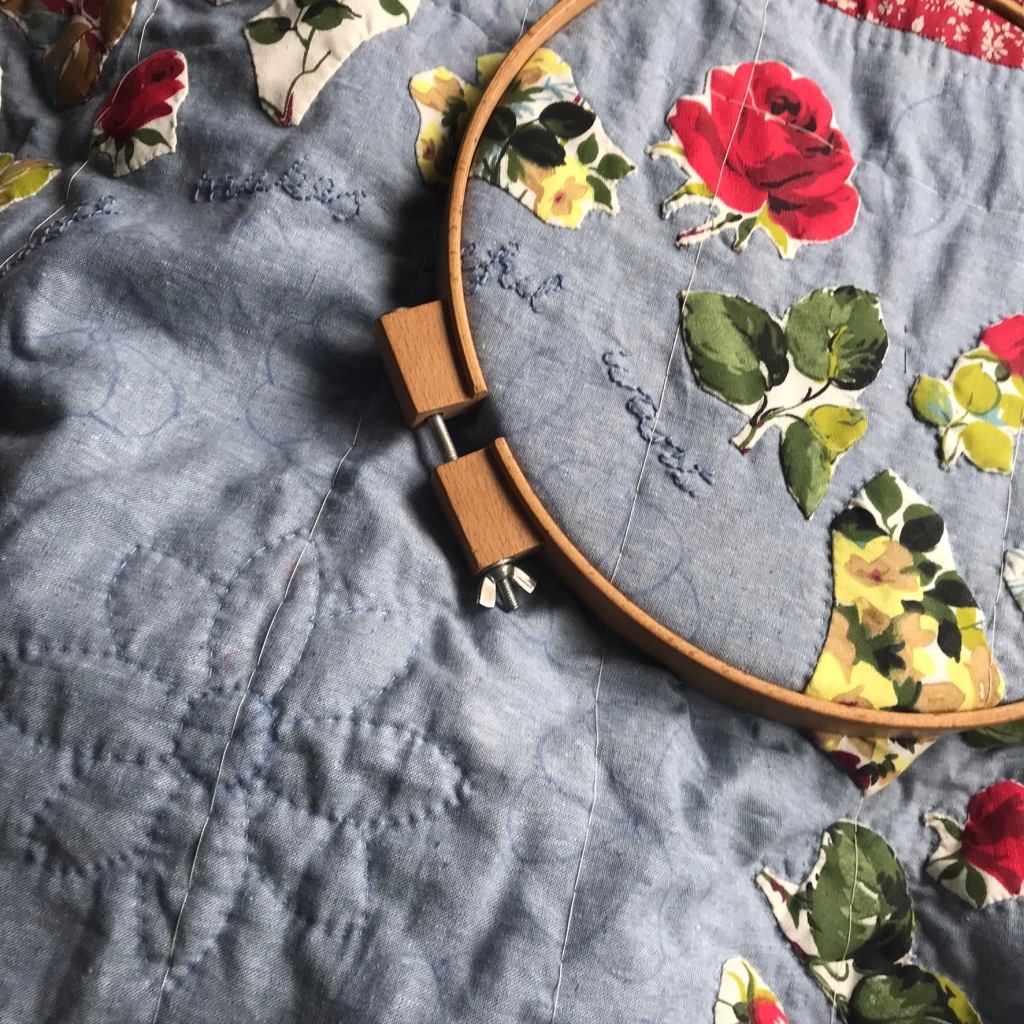
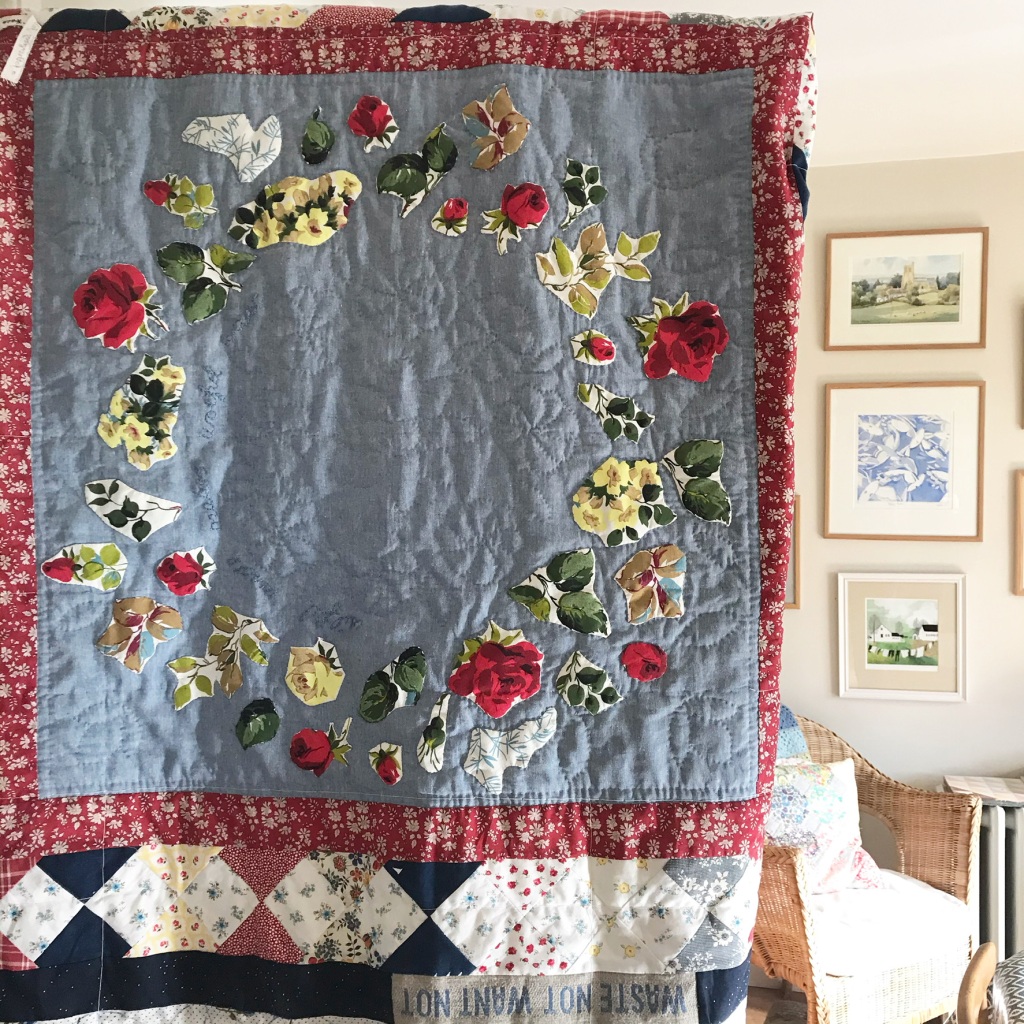
I relished hand quilting this make. I knew I wanted it to be soft and gentle and so I decided to reference the wreath design again in the quilting of the central panel repeating flowers and leaves around the broderie perse. In studying old English quilting patterns it’s clear that makers used whatever motifs and symbols they saw around them, why don’t we still do the same? In each frame I chose a favourite traditional hand quilting motives, in the outer corner squares I adapted the eminently ‘quiltable’ logos that we all see and don’t really notice in their ubiquity – the symbols for recycling. Fabrics are after all the ultimate recyclable product – and the quilt is the perfect vehicle for adding value to a waste item. Quilting patterns of the past were firstly practical, drafted using household inspirations, why not continue that tradition by co-opting the logos we see everyday in our lives now?

The back was also super practical, whatever fabric had not made it into the front became a pieced back, incorporating the extra flying geese units, some red strips and a lovely piece of seersucker which quilted up into a beautiful texture.







Of all my quilts my scrap quilt is my favourite and is my constant companion on these chilly winter evenings. It has fabric old and new in it and reminds me of various times long past …. You’ve made a beautiful work of art and have put so much thought into it. I’m so glad someone else ponders fabric for ages before uses. I believe that it all slots together in the end!
LikeLike
I couldn’t agree more! Patchwork serendipity✨
LikeLike
Thank you for writings this! What drew me to quilting was that it gave me a chance to reuse fabric that I love and that I had woven memories into by use. I have been reflected on why so few quilters that reused fabrics for a while now. This was really thoughtful, and gives answers to many of my questions.
I loved this reflection:
«The heart of patchwork is that it celebrates a state of mind that encourages thrift. But thrift in the modern world has been attached to ideas of going without, to a sense of less rather than more.»
And as you say, when one only use quilting cotton, one end up with one texture and one feel. When one combines different types of fabrics, one end up with an abundance of textures and feels. But it is hard to find inspiration and learn from other quilters experiences with using a variety of fabrics as it is now, because so few quilters do it. I think that we need to develop new practices for reuse in quilting, and for combining old and new, and share our experiences along the way.
LikeLike
Thank you. I’m glad this resonated with you. I really believe that the creative challenges involved in using fabrics in their second life enhances the enjoyment of quilt making and it is always lovely to hear from others who agree.
LikeLike